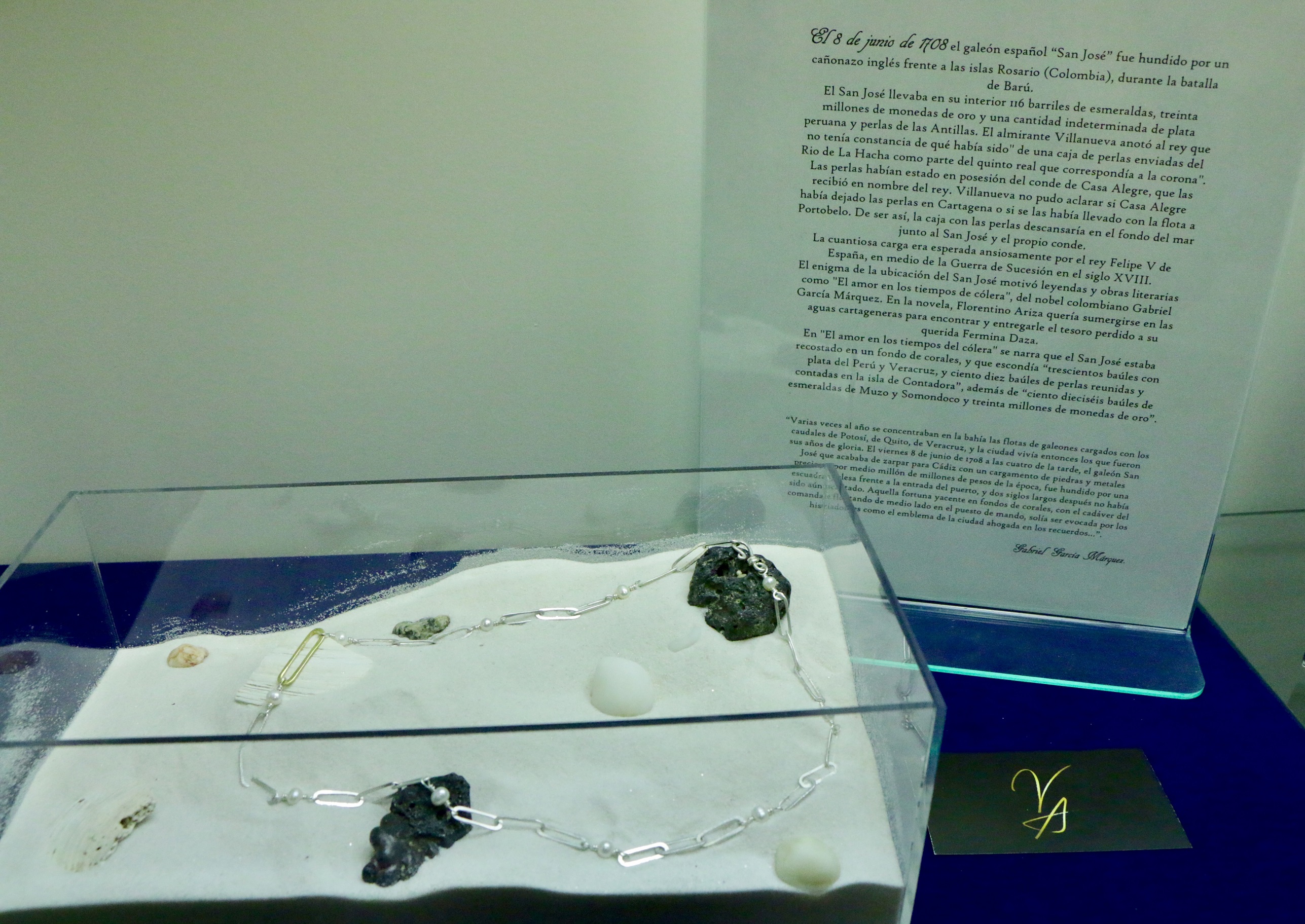Tesoros escondidos en la biblioteca: el galeón San José
El 8 de junio de 1708 el galeón español “San José” fue hundido por un cañonazo inglés frente a las islas Rosario (Colombia), durante la batalla de Barú.
El San José llevaba en su interior 116 barriles de esmeraldas, treinta millones de monedas de oro y una cantidad indeterminada de plata peruana y perlas de las Antillas. El almirante Villanueva anotó al rey que no tenía constancia de qué había sido «de una caja de perlas enviadas del Rio de La Hacha como parte del quinto real que correspondía a la corona». Las perlas habían estado en posesión del conde de Casa Alegre, que las recibió en nombre del rey. Villanueva no pudo aclarar si Casa Alegre había dejado las perlas en Cartagena o si se las había llevado con la flota a Portobelo (ahora en Panamá). De ser así, la caja con las perlas descansaría en el fondo del mar junto al San José y el propio conde.
La cuantiosa carga era esperada ansiosamente por el rey Felipe V de España, en medio de la Guerra de Sucesión en el siglo XVIII.
El enigma del pecio del San José motivó leyendas y obras literarias como El amor en los tiempos de cólera, del nobel colombiano Gabriel García Márquez. En la novela, Florentino Ariza quería sumergirse en las aguas cartageneras para encontrar y entregarle el tesoro perdido a su querida Fermina Daza.
En El amor en los tiempos del cólera se narra que el San José estaba recostado en un fondo de corales, y que escondía “trescientos baúles con plata del Perú y Veracruz, y ciento diez baúles de perlas reunidas y contadas en la isla de Contadora”, además de “ciento dieciséis baúles de esmeraldas de Muzo y Somondoco y treinta millones de monedas de oro”.
“Varias veces al año se concentraban en la bahía las flotas de galeones cargados con los caudales de Potosí, de Quito, de Veracruz, y la ciudad vivía entonces los que fueron sus años de gloria. El viernes 8 de junio de 1708 a las cuatro de la tarde, el galeón San José que acababa de zarpar para Cádiz con un cargamento de piedras y metales preciosos por medio millón de millones de pesos de la época, fue hundido por una escuadra inglesa frente a la entrada del puerto, y dos siglos largos después no había sido aún rescatado. Aquella fortuna yacente en fondos de corales, con el cadáver del comandante flotando de medio lado en el puesto de mando, solía ser evocada por los historiadores como el emblema de la ciudad ahogada en los recuerdos…”. (Gabriel García Márquez)
On June 8, 1708, the Spanish galleon «San José» was sunk by an English cannon in front of the Rosario Islands (Colombia) during the Battle of Barú.
The San Jose had in its interior 116 barrels of emeralds, thirty million gold coins and an indeterminate amount of Peruvian silver and pearls from the Antilles. Admiral Villanueva wrote to the king that he had no record of what had been «from a box of pearls sent from the Rio de la Hacha as part of the royal fifth that corresponded to the crown.» The pearls had been in the possession of the count of Casa Alegre, who received them in the name of the king. Villanueva could not clarify if Casa Alegre had left the pearls in Cartagena or if he had taken them with the fleet to Portobelo (now in Panama). If so, the box with the pearls would rest at the bottom of the sea next to San José and the count himself.
The enormous burden was eagerly awaited by King Philip V of Spain, in the midst of the War of Succession in the eighteenth century.
The enigma of the San José wreck motivated legends and literary works such as El amor en los tiempos del cólera, by the Colombian Nobel Prize winner Gabriel García Márquez. In the novel, Florentino Ariza wanted to immerse himself in the waters of Cartagena to find and deliver the lost treasure to his beloved Fermina Daza.
In the novel Love in the Time of Cholera, it is narrated that the San José was reclining on a background of corals, and hiding «three hundred trunks with silver from Peru and Veracruz, and one hundred and ten trunks of pearls gathered and counted on the island of Contadora», in addition to «one hundred and sixteen trunks of emeralds of Muzo and Somondoco and thirty million gold coins».
«Several times a year the fleets of galleons loaded with the volumes of Potosí, of Quito, of Veracruz, were concentrated in the bay, and the city lived then those that were its years of glory. On Friday, June 8, 1708 at four o’clock in the afternoon, the San Jose galleon that had just set sail for Cádiz with a cargo of stones and precious metals for half a billion pesos of the time, was sunk by an English squadron in front of at the entrance to the port, and two centuries later it had not yet been rescued. That fortune lying in coral funds, with the corpse of the commander floating sideways in the command post, used to be evoked by historians as the emblem of the city drowned in memories … «. (Gabriel Garcia Marquez)
